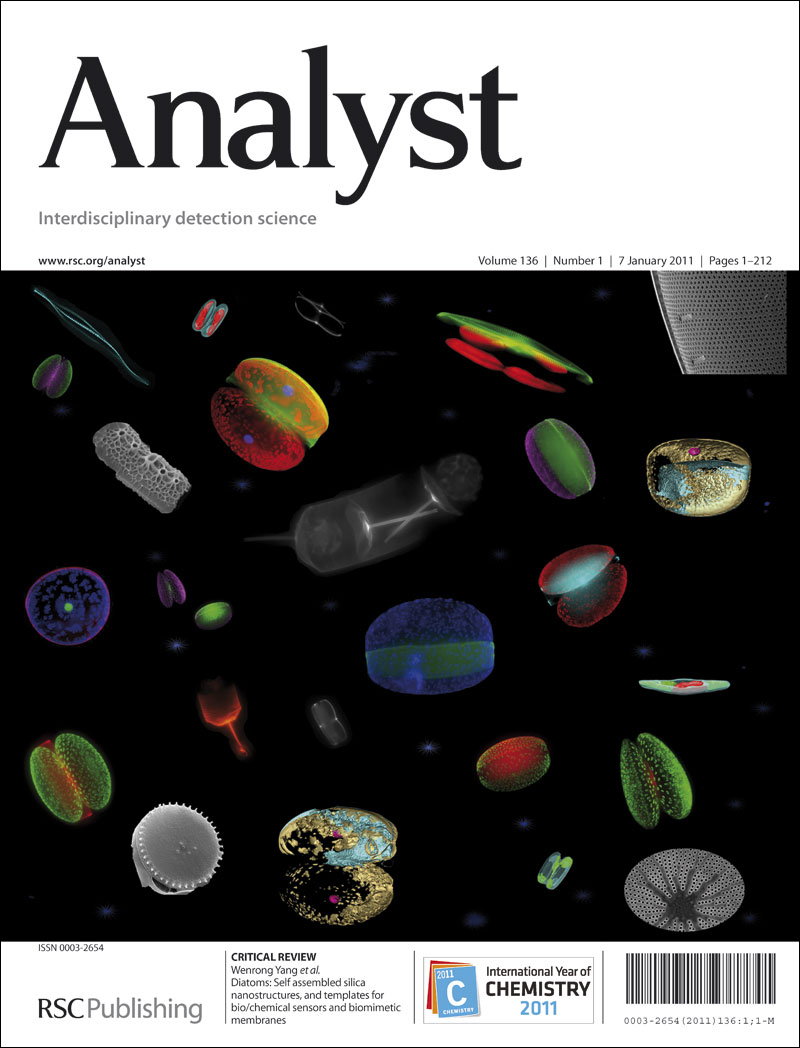利用拉曼显微镜监测间充质干细胞分化的动力学演变
IF 3.6
3区 化学
Q2 CHEMISTRY, ANALYTICAL
引用次数: 0
摘要
拉曼显微光谱(RMS)为细胞内动态生化过程的原位监测提供了一种强大的、非破坏性的方法。然而,对光谱特征及其演变进行可靠的数据挖掘并提取有意义的信息的能力是具有挑战性的。多元曲线分辨率-交替最小二乘(MCR-ALS)回归分析是一种强大的化学计量学技术,可以通过将光谱解卷积为单个成分光谱,每个成分代表一个特定的生化物种,并根据动力学约束回归解决方案,潜在地解决这一挑战。本研究对间充质干细胞向软骨细胞分化过程的光谱数据进行了MCR-ALS分析,分别在胶原三维水凝胶和常规二维培养模型两种不同的基质上进行,时间间隔为1-7、14、21天。根据现象学速率方程模型对软骨形成的动力学演化进行建模,试图描述过程中细胞组成的生化演化。此外,还探讨了该算法忠实地提取正确的反应速率和光谱分布的能力。结果表明,分化过程起源于核仁区,随后延伸到细胞核和细胞质室,并证实了在3D胶原水凝胶上培养的细胞比在2D基质上培养的细胞分化速度更快。拉曼显微光谱和MCR-ALS的结合为阐明软骨形成的复杂机制和开发再生医学的创新策略提供了强有力的方法。本文章由计算机程序翻译,如有差异,请以英文原文为准。
Monitoring the Kinetic Evolution of Mesenchymal Stem Cell Differentiation using Raman Micropectroscopy
Raman microspectroscopy (RMS) offers a powerful, non-destructive approach for in situ monitoring of dynamic biochemical processes within cells. However, the ability to reliably data-mine the spectroscopic signatures and their evolution and extract meaningful information can be challenging. Multivariate Curve Resolution-Alternating Least Squares (MCR-ALS) regression analysis is a powerful chemometric technique that can potentially address this challenge by deconvoluting the spectra into individual component spectra, each representing a specific biochemical species, and regressing the solutions against kinetic constraints. In this study, MCR-ALS analysis was performed on spectral data of differentiation process of mesenchymal stem cells into chondrocytes, carried out on two different substrates, collagen 3-dimensional hydrogel and the conventional 2D culture model at time intervals of 1-7, 14, 21 days. The kinetic evolution of the chondrogenesis was modelled according to a phenomenological rate equation model, in an attempt to describe the biochemical evolution of the cell composition within the process. Moreover, the ability of the algorithm to faithfully extract the correct reaction rates and spectral profiles has been explored. The results indicated that the differentiation process originates in the nucleolar regions, subsequently extending to the nuclear and cytoplasmic compartments and corroborated a more rapid differentiation rate in cell cultures grown on 3D collagen hydrogels compared to 2D substrates. The combination of Raman microspectroscopy and MCR-ALS offers a powerful approach for elucidating the complex mechanisms underlying chondrogenesis and developing innovative strategies for regenerative medicine.
求助全文
通过发布文献求助,成功后即可免费获取论文全文。
去求助
来源期刊

Analyst
化学-分析化学
CiteScore
7.80
自引率
4.80%
发文量
636
审稿时长
1.9 months
期刊介绍:
"Analyst" journal is the home of premier fundamental discoveries, inventions and applications in the analytical and bioanalytical sciences.
 求助内容:
求助内容: 应助结果提醒方式:
应助结果提醒方式:


